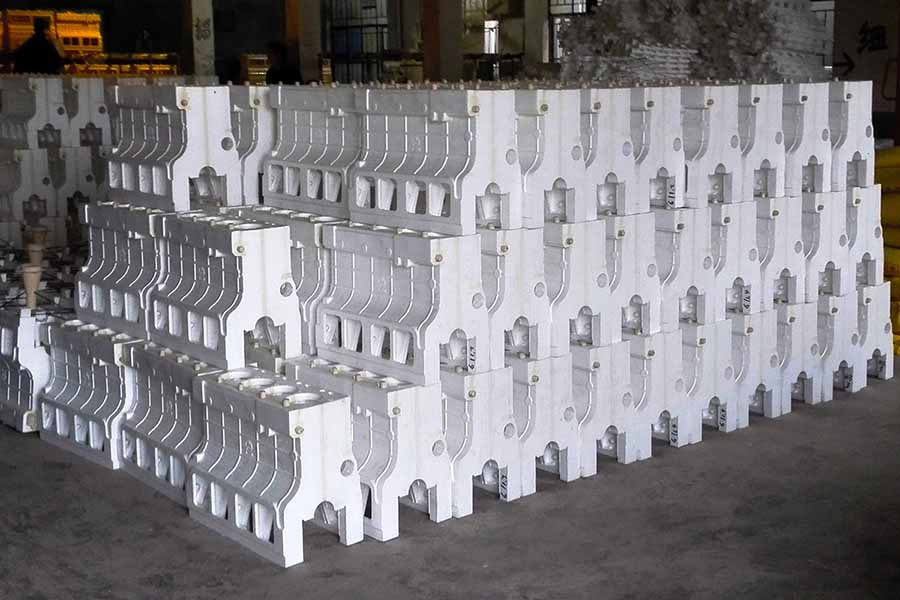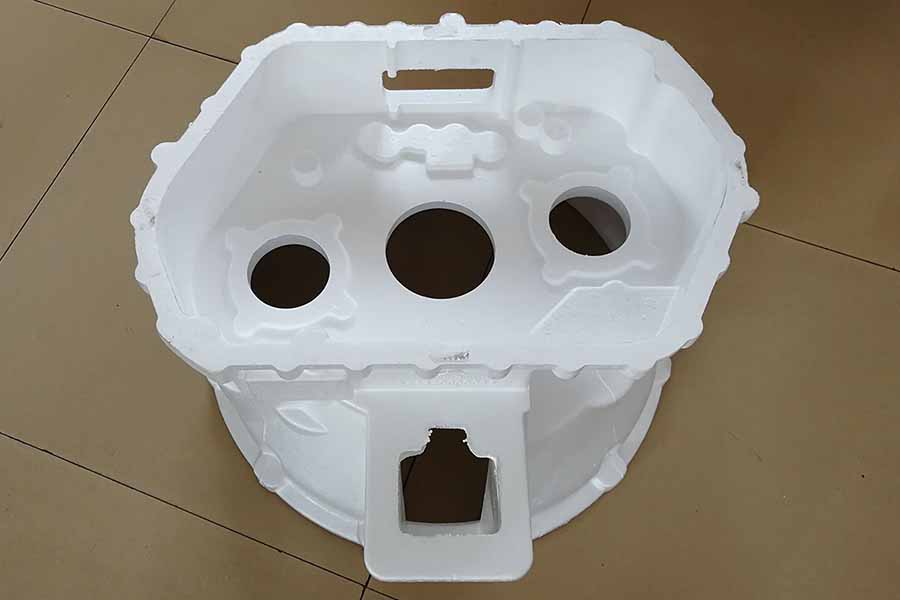What is Lost Foam Casting?
Lost Foam Casting, also known as Full Mold Casting, or Cavityless Molding Casting, refers to a casting method that combines foam molding with dry sand molding. The molten metal directly fills and replaces the space occupied by the original plastic mold, and directly obtains the required casting after cooling. The foam pattern is directly vaporized during the metal casting process, so the lost foam casting does not require mold removal. During the lost foam casting process, the commonly used pattern material is polystyrene.

The Steps of Lost Foam Casting:
1- Use foam molds to produce foam patterns and casting gating systems2- Bond the patterns and runners to form a mold bundle module
3- Dip paint on the module
4- Dry the paint
5- Put the module into the sand box and fill it with dry sand
6- Vibrate molding in order to fill the cavity with dry sand and then compact the molding sand
7- Pouring molten metal to vaporize the foam and then forming the desired castings
8- After the castings have cooled, clean the castings. The dry sand can be recycled
Advantages of Lost Foam Casting
1- Lost foam casting is a near-net shape casting method. The dimensional tolerance of the casting can reach CT6~CT9, and the surface roughness is Ra=6.3~50 μm. The shape of lost foam castings can be comparable to resin sand castings.2- Lost foam casting can produce castings with complex shapes and complex cavities. Compared with the resin sand casting process, the more sand cores are replaced, the greater the profit margin of lost foam casting. The core competitiveness of lost foam casting is the production of difficult castings with complex inner cavities, such as engine block, engine head and box, etc. These characteristics make the superiority and economic benefits of lost foam casting fully appear, and realize the lightweight and precise casting.
3- Lost foam casting does not require mold removal, which provides greater freedom for casting design and casting process. In terms of process design, the lost foam casting process is first broken into parts and then spliced into a whole, and then the lost foam process is used for integral casting, so that the lost foam casting has the competitive advantage with the traditional sand casting.
4- The use of lost foam casting process can greatly reduce labor intensity, reduce the generation of solid waste, and the used dry sand can be recycled. This feature meets the requirements of energy saving and emission reduction, and has changed the harsh environment of traditional sand casting.
Disadvantages of Lost Foam Casting
1- The surface quality and material properties of lost foam castings are easily affected by the decomposition products produced by foam gasification, which can cause problems such as carbon defects on the surface of iron castings and carbon increase on the surface of steel castings. At the same time, defects such as slag holes and pores are easily formed on the surface of the casting.2- When using the lost foam casting process to produce thin-walled products, the deformation of the casting size is not easy to control.
3- The harmful substances produced by foam gasification have serious pollution to the atmosphere. Therefore, the exhaust gas recovery and cleaning equipment of the lost foam foundry is very critical.

 русский
русский



